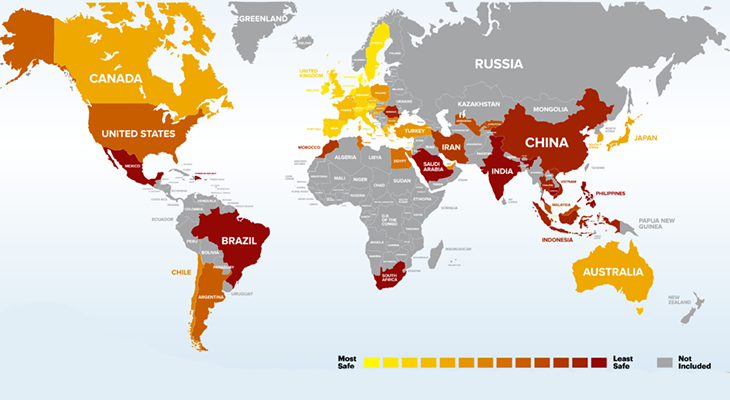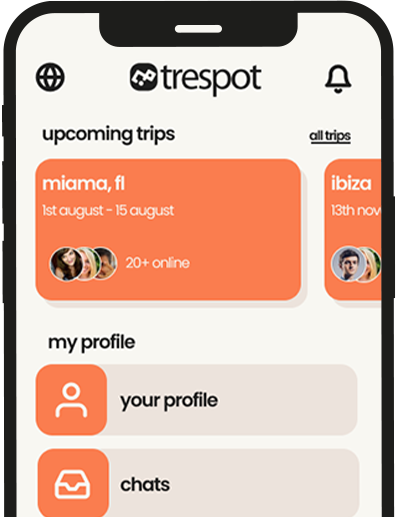Unsafe Places to Visit: A Data‑Led 2025 Guide

What makes a destination “unsafe”? It’s rarely one thing. Unsafe places to visit typically combine security threats (conflict, terrorism, violent crime), limited medical care, and hazards like extreme weather or disease outbreaks. Because risks change quickly, the smartest plan blends multiple sources: the International SOS Travel Risk Map for security/medical baselines, U.S. State Department travel advisories for practical constraints, and neutral yardsticks like the Global Peace Index and UNODC homicide data for context. We also scan current news for sudden flashpoints (border clashes, wildfires) that can upend even a well‑planned trip. In this guide, you’ll learn how experts define risk, see examples of countries and cities frequently flagged for 2025, and get a traveler‑tested playbook to evaluate and reduce exposure—plus ethical tips for visiting fragile places without adding harm. If your goal is responsible adventure, start here, then pair it with live checks before you book.
Table of Contents
How we define “unsafe places to visit” (and why lists differ)
Security vs. medical risk. International SOS rates destinations separately for travel security (conflict, crime, kidnapping, unrest) and medical (healthcare quality, emergency response, outbreak risk). A country can be moderate on one axis and extreme on the other. Many media “unsafe” lists trace back to this map, so learn to read it first.
Perception vs. reality. Crime‑perception indexes can highlight traveler unease and on‑the‑ground alerts, but they’re crowd‑sourced and not official statistics. Pair them with hard outcomes—homicide rates (UNODC) and broader conflict indicators (Global Peace Index)—to avoid over‑ or under‑weighting a place based on vibes alone.
What “Do Not Travel” means. State Department Level 4 advisories indicate severe risk and often limited consular help if things go wrong. Airlines may also reduce service or insurance may become tricky. Always read the specific reasons (terrorism, crime, wrongful detention, health system collapse) and the date updated.
Unique insight: Treat risk as dynamic, not a label. Ask: What is the risk driver? Is it localized? How fast can it escalate? What’s the medical fallback? This mindset keeps you flexible and avoids blanket assumptions.
Active conflicts & war zones (where instability spikes without warning)
Extreme‑risk countries in 2025. Lists derived from International SOS consistently place Afghanistan, Central African Republic, Iraq, Libya, Somalia, South Sudan, Sudan, Syria, Ukraine, and Yemen at extreme security risk. For travelers, that usually means unpredictable violence, checkpoint/curfew constraints, and real challenges with evacuation or medical care.
Flashpoints & spillovers. Not every risk is a formal war. Border flare‑ups can close crossings or lead to sudden evacuations—conditions that can upend itineraries far from the front line.
Government advisories change fast. U.S. Level‑4 warnings (e.g., Haiti, Libya, Iraq, Syria and others updated periodically) layer on top of long‑standing no‑go countries. These updates filter into airline schedules and travel insurance fine print; if your route touches a neighboring country, expect tighter screening and possible overflight changes.
What this means for you. In conflict‑affected regions, basic assumptions fail: airspace restrictions, curfews, communication blackouts, and limited consular access are common. If you must travel for essential reasons, pre‑arrange security‑aware logistics, know embassy contingency procedures, and consider vendors that understand medical evacuation from high‑risk environments.
Unique insight: When evaluating itineraries near conflict zones, map “no‑go hours” (curfews, checkpoints) and “no‑go corridors” (roads known for ambush or extortion). If you can’t get real‑time, route‑level info, you don’t have enough fidelity to travel safely.
High‑crime urban hotspots & kidnapping risk
Reading the rankings. Perception lists flagged cities like Pietermaritzburg, Pretoria, Caracas, and Port Moresby as high‑risk. These can be helpful starting points—especially for theft, robbery, or carjacking patterns—but they need to be balanced against official crime and homicide data to avoid confirmation bias.
What the data adds. The UNODC Global Study on Homicide offers historical context and regional trends (for example, very high homicide rates in parts of Latin America and the Caribbean). If a city sits inside a country with persistently high homicide rates and weak policing, plan for stricter movement discipline, vetted transport, and neighborhood‑level selection.
Kidnapping & “express” abductions. Security analysts routinely cite express kidnappings (short‑duration abductions aimed at quick withdrawals at ATMs) in certain metros; traveler vulnerabilities include predictable routines and unvetted taxis. Risks often cluster around airport‑to‑hotel transfers and nightlife exits.
Street‑level mitigations that work. Use airport meet‑and‑greet with vetted drivers, default to ride‑hail pickup zones inside secure perimeters, keep a decoy wallet/phone, vary routes/times, and avoid late‑night solo transits. Pre‑book restaurants and request hotel door‑to‑door cars when leaving after dark.
Unique insight: Build a “geo‑fenced day”—draw a small polygon of safe blocks around your lodging that includes breakfast/coffee, co‑working, and dinner options. On arrival day (jet‑lagged = vulnerable), keep all essentials inside that polygon.
Natural hazards & climate extremes
Wildfire, heat, hurricanes, floods. Climate‑linked hazards increasingly turn otherwise safe regions into temporarily unsafe places to visit. Recent seasons saw evacuations and widespread smoke impacts in Southern Europe—even as flights continued and official guidance shifted day by day.
Seasonality matters. The Atlantic hurricane season (June–Nov; peak Aug–Sep) and monsoon/flood seasons in Asia can disrupt travel and strain health systems. Analysts emphasize that storm surge and infrastructure fragility (power, water) are often more dangerous than headline wind speeds.
Heat as a travel risk. “Tropical nights” (minimums >20 °C) and multi‑day heat waves push heat exhaustion and dehydration risk higher, particularly in dense cities with limited shade. Travelers who plan only by daytime highs miss the overnight recovery factor that affects sleep, cognition, and judgment.
Practical moves. Watch civil‑protection feeds and local alerts, choose lodgings with AC and backup power, and shift activities to early/late windows. Keep flexible Plan B day trips to less‑exposed microclimates (coast ↔ hills), and know ticket policies for smoke/heat cancellations.
Unique insight: In fire season, book two refundable hotels in different micro‑zones (e.g., coastal vs. inland) for the same dates and cancel late—an inexpensive hedge that preserves clean air and keeps your trip alive when conditions shift. (Always respect local guidance.)
Health system stress, outbreaks & infrastructure reliability
Medical risk ≠ crime risk. A destination may have low crime yet be unsafe because healthcare access is severely limited or facilities are overwhelmed (conflict, disaster, or chronic under‑investment). International SOS’s medical risk ratings exist precisely to flag these issues—ambulance reliability, ICU capacity, medevac feasibility, and outbreak management.
Outbreaks and environmental health. Poor air quality, contaminated water, and vector‑borne disease spikes can turn a “safe” city into a short‑term risk. Many Level‑4 advisories cite health among the reasons to avoid travel (e.g., lack of medicines, hospital shortages).
What “limited consular help” feels like. In some Level‑4 countries, embassies run with minimal staff or have suspended operations; roads to the capital can be too unsafe to reach even if you need assistance. If you go anyway (e.g., essential work), arrange primary and contingency medical plans and pre‑approve evacuation providers and aircraft routing options.
Traveler playbook. Confirm travel insurance covers Level‑3/4 countries (many exclude them), add medical evacuation coverage, carry essential meds in original packaging, and save pin‑drop locations for urgent care/clinics with your insurer’s network.
Unique insight: Ask hotels which private clinics they escort guests to after hours and whether a doctor on call is available; that answer is often more actionable than a city‑wide “it’s safe” claim.
Make‑or‑break trip planning: assessing & reducing risk
A 7‑point due‑diligence checklist.
- Pull the International SOS Travel Risk Map (security + medical) and the U.S. State Department advisory page for each country/city.
- Scan news for fresh flashpoints (border incidents, protests, disasters) for your exact dates.
- Reality‑check perceptions with UNODC homicide or the Global Peace Index.
- Map medical options and confirm insurer acceptance.
- Build movement discipline: vetted transport; avoid night transfers; cash/phone redundancy.
- Pre‑book with refundable rates; keep Plan B/C destinations.
- If ethics concern you, prioritize community‑owned businesses and avoid companies linked to abuses.
Rerouting playbook (safer substitutes with similar vibes).
- Red Sea conflict‑affected coasts → Canary Islands or Madeira for winter sun.
- High‑crime metros for food/nightlife → Lisbon, Taipei, or Singapore (strong safety records).
- Borderland hikes near fresh clashes → Azores or Scotland Highlands off‑season.
Ethics of travel to fragile places. Tourism can be both lifeline and liability. If you go, use local operators, avoid propaganda tours, never launder dangerous regimes’ reputations in your posts, and respect local civil‑society guidance.
Unique insight: Treat your itinerary as software—version it, keep a changelog, and define kill‑switch criteria (e.g., embassy outage + curfew + hospital overload) that automatically trigger your exit plan.
Quick Takeaways
-
“Unsafe” spans security, medical, and hazard risk—check all three before you book.
-
International SOS and State Dept pages are the most actionable first steps.
-
2025 extreme‑risk countries include Afghanistan, Sudan/South Sudan, Somalia, Yemen, Syria, Libya, Iraq, CAR, and Ukraine. Avoid non‑essential travel.
-
Perception lists (city crime indexes) need a reality check against UNODC and GPI data.
-
Climate hazards (e.g., wildfires) can make otherwise safe regions unsafe temporarily—build Plan B.
Conclusion
There’s no single master list of unsafe places to visit—and that’s the point. Risks mutate with politics, weather, and health systems, so your best defense is a repeatable process. Start with the International SOS Travel Risk Map to see both security and medical ratings, then pull State Department advisories to learn the operational constraints you’ll actually face on the ground. Add a reality check with UNODC homicide data and the Global Peace Index so perception doesn’t crowd out facts. Finally, scan fresh news for flashpoints (border incidents, wildfires) on your exact dates. With this stack, you’ll know whether a destination is a hard “no,” a “go with caution,” or simply needs tweaks—like vetted transfers, different neighborhoods, shoulder‑season timing, or a safer substitute with similar vibes.
If you’re planning with friends or a travel meetup group, assign roles: one person tracks advisories, another monitors local news/social, a third books refundable stays and keeps Plan B ready. Responsible adventure isn’t about fear—it’s about clarity and choices. Use the frameworks here to protect your time, budget, and community—and share your findings with fellow travelers in Trespot so we all get smarter, safer, and more connected.
FAQs — Unsafe Places to Visit
1) What are the most unsafe places to visit right now?
Lists vary, but 2025 risk maps repeatedly place Afghanistan, Yemen, Somalia, Syria, Sudan/South Sudan, Libya, Iraq, Central African Republic, and Ukraine at extreme security risk; always recheck advisories before booking.
2) Are “dangerous cities” lists reliable?
They’re useful signals but often reflect perceptions. Cross‑reference with official homicide data (UNODC) and current advisories to avoid skewed impressions.
3) How do wildfires or heat waves change safety?
They can turn otherwise safe regions into temporarily risky destinations (evacuations, smoke, hospital pressure). Monitor local authorities and choose refundable bookings.
4) What does “Level 4: Do Not Travel” mean for insurance?
Many policies exclude Level‑4 countries or require special riders; some airlines also curtail service. Read policy wording and confirm coverage in writing.
5) If I must go to a risky country, what’s the minimum prep?
Vetted transport, movement discipline, medical evacuation coverage, clinic locations pre‑saved, daily news checks, and a kill‑switch exit plan tied to specific triggers.
Was this guide useful?
Tell us your upcoming destination and month, and we’ll reply with a personalized risk‑scan checklist and safer look‑alike alternatives (if needed). And don’t forget to join the conversation in the Trespot Travel Safety & Meetups rooms to coordinate plans and share on‑the‑ground intel.
Question for you: What’s your go‑to Plan B destination when conditions change—beach, mountains, or a city break with great museums?


